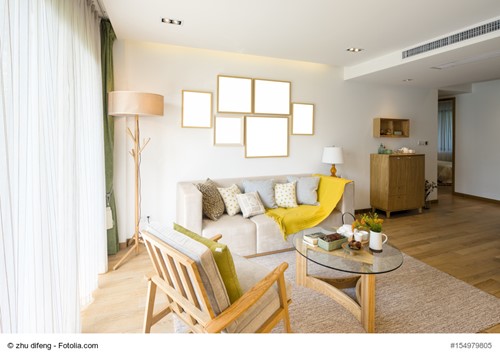 There’s a lot more to interior design than simply picking out the latest trends in home decor. Design principles are also used to make the atmosphere of your home spacious and welcoming, and to make your home livable in a practical way.
There’s a lot more to interior design than simply picking out the latest trends in home decor. Design principles are also used to make the atmosphere of your home spacious and welcoming, and to make your home livable in a practical way.
In spite of the fact that most people will own a home someday, no one is ever really taught interior design. So, it comes as little surprise that so many people are missing out on simple techniques that can drastically improve their home.
In today’s article, we’re going to share with you some of the best interior design and decorating secrets to help you spruce up your home and make it more practical at the same time.
Having a low ceiling can make it difficult to decorate and make your home seem spacious. One great workaround is to avoid tall furniture and seek out chairs with low backs, and bookcases that are wide rather than tall.
Omit hanging lights and ceiling fans and used recessed lighting instead to maximize your space and avoid having taller guests having to dodge objects hanging from the ceiling.
Finally, paint the ceiling white and remove crown molding to give the impression of openness.
If you have a small home it can feel difficult to keep things uncluttered while still making sure you have everything you need. There are a few ways to make rooms feel more spacious that don’t involve throwing out your belongings.
First, add mirrors to give the illusion (literally) of space. A single or group of mirrors can be a nice decorative touch that makes a room seem much larger than it is.
Next, paint and decorate with mainly light colors or white. Dark colors will make a room feel smaller.
Lastly, take advantage of hidden storage space, such as tables with drawers underneath, and avoid putting decorations on too many surfaces. Filling the room up with objects will make it appear smaller.
There’s a rule in interior decorating called the “cantaloupe rule.” It states that you should avoid using decorations that are smaller than a cantaloupe.
However, that doesn’t mean this rule can’t be artfully broken. A better description would be that you should omit several small decorations in favor of just a few large ones.
When choosing the color of your furniture, walls, and decoration it can be easy to just choose whichever color you like for that object rather than what works well in your home. Try making a color palette to adhere to when shopping for these items.
Create a house-wide palette and a palette for each room. Stick to three or four colors that complement each other well for each room, and make sure they aren’t too starkly contrasted from other rooms in your home.
If you aren’t sure about how to design a color palette there are several free online tools you can use to help.
